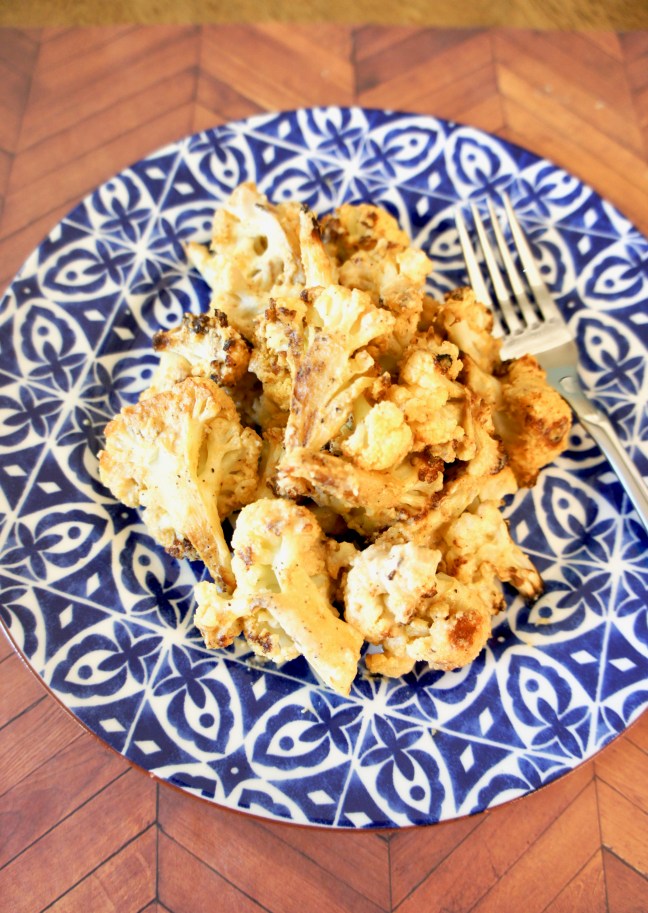This tahini roasted cauliflower is my absolute favorite! It’s the perfect crispy, slightly spicy side dish.

You know you’re really a grown-up when you get excited that your whole family is leaving the house so you can stay behind and clean. I recall the first time I shooed my family out of the house to go do something legitimately fun–roller skating, maybe?–to let me scrub counters and mop floors in peace.
In a similar way, the other night when two of my kids were eating dinner at a friend’s and my husband took my other son out for dinner, I kinda couldn’t contain my excitement. It meant I got to stay home and make myself an entire freaking head of tahini roasted cauliflower.
And this is how I know I’m a grown-up…or how I know I’m a nutritionist…or maybe just how I know I love really good food. Because, friends, this cauliflower is ahhhh-mazing. Over the next two days, I proceeded to eat the entire head myself.

If you’ve ever thought cauliflower was bland, this is the recipe for you. It starts with an Amazing All-Purpose Tahini Sauce–a flavorful blend of tahini, lemon juice, garlic, and spices. For a vegan sauce, this recipe is delightfully, surprisingly creamy. (It gets its silky texture from ground sesame seeds.) Once you’ve whipped up a batch, simply slather it atop perfectly crisped roasted florets…and voila, uber-flavorful veggies!
Not only will you get healthy fats from tahini’s sesame seed base, you’ll add even more of them by roasting cauliflower in olive oil. Meanwhile, cauliflower’s status as a cruciferous veggie makes it a nutrient-dense choice that even may have cancer-fighting properties.
So there you have it–roasted tahini cauliflower, a deliciously creamy, healthy veggie to add to your repertoire. Try it as a side dish with meat, in a grain bowl, or, like me, eat it straight off the pan as a main dish in its own right.
Tahini Roasted Cauliflower
Ingredients
For the cauliflower:
- 1 large head cauliflower, diced into florets
- 2 Tbsp. olive oil
- 1 tsp. paprika
- salt and pepper, to taste
For the tahini sauce:
- 1/3 c. tahini
- 1/3 c. water
- 1/4 c. lemon juice
- 2 cloves garlic, minced
- 1/2 tsp. cumin
- 1/4 tsp. cayenne pepper
- 1/4 tsp. salt
Instructions
Roast the cauliflower:
- Preheat oven to 425 degrees F. Toss cauliflower florets with olive oil, paprika, and salt and pepper. Spread evenly on a baking sheet. Bake 25-28 minutes, stirring once halfway through.
Make the tahini sauce:
- While cauliflower roasts, prepare the sauce by combining all ingredients thoroughly in a measuring cup.
Dress the cauliflower:
- When cauliflower comes out of the oven, dress with tahini sauce to taste. Save extra tahini sauce covered in the refrigerator.
















